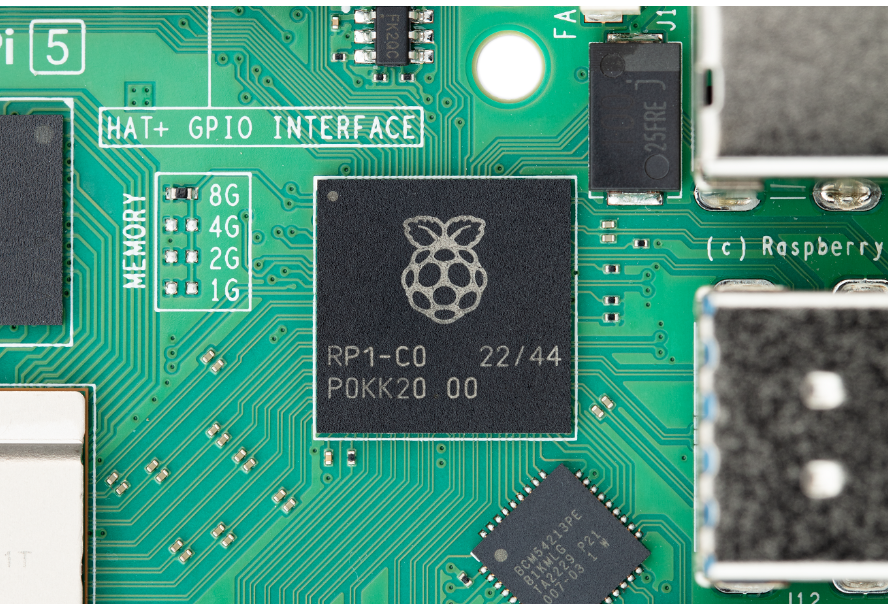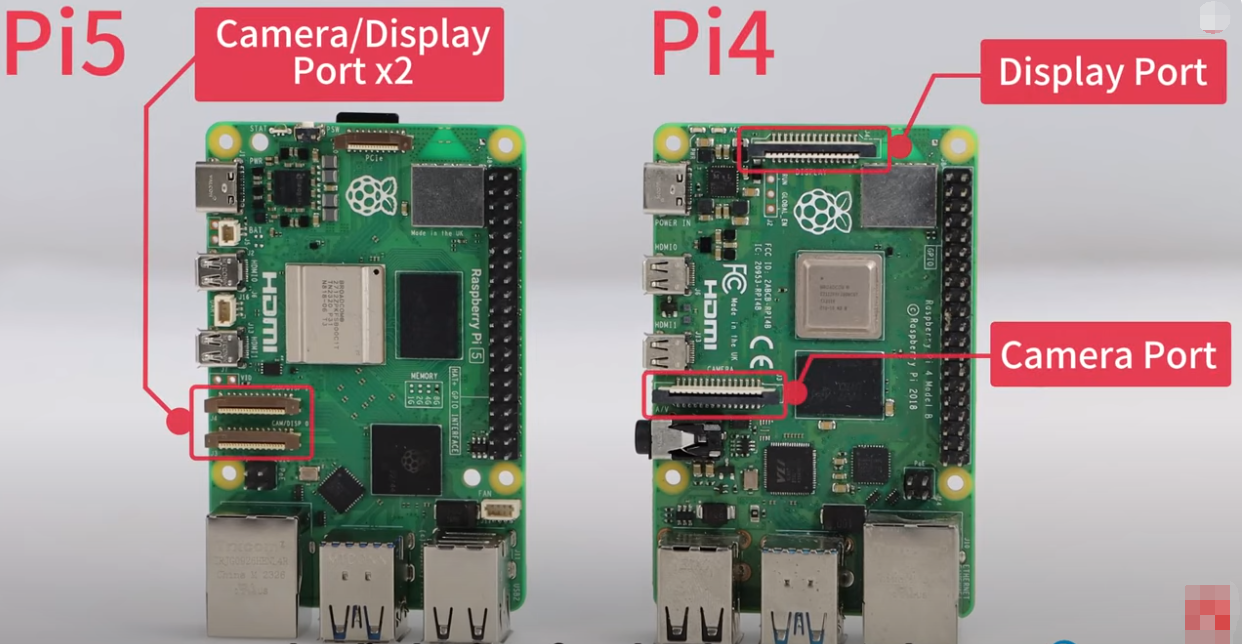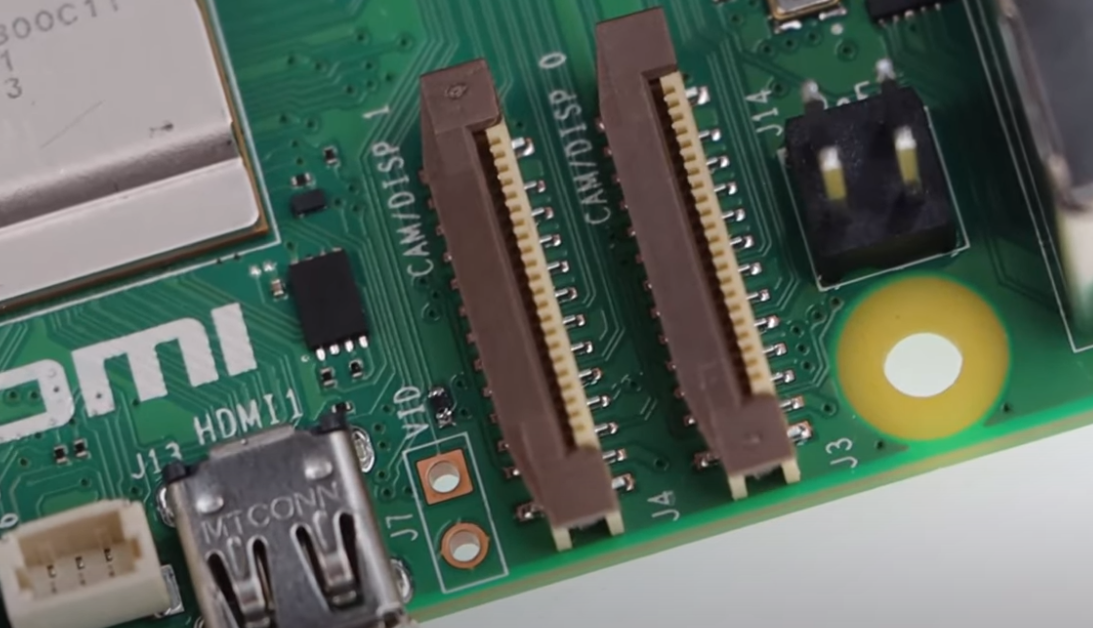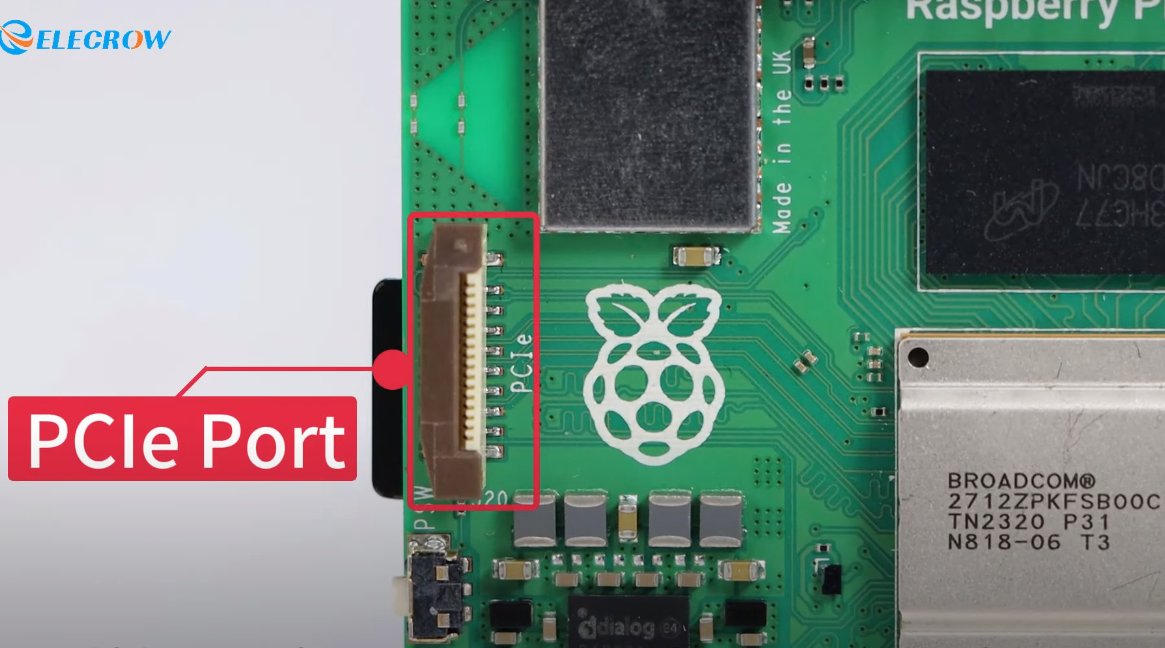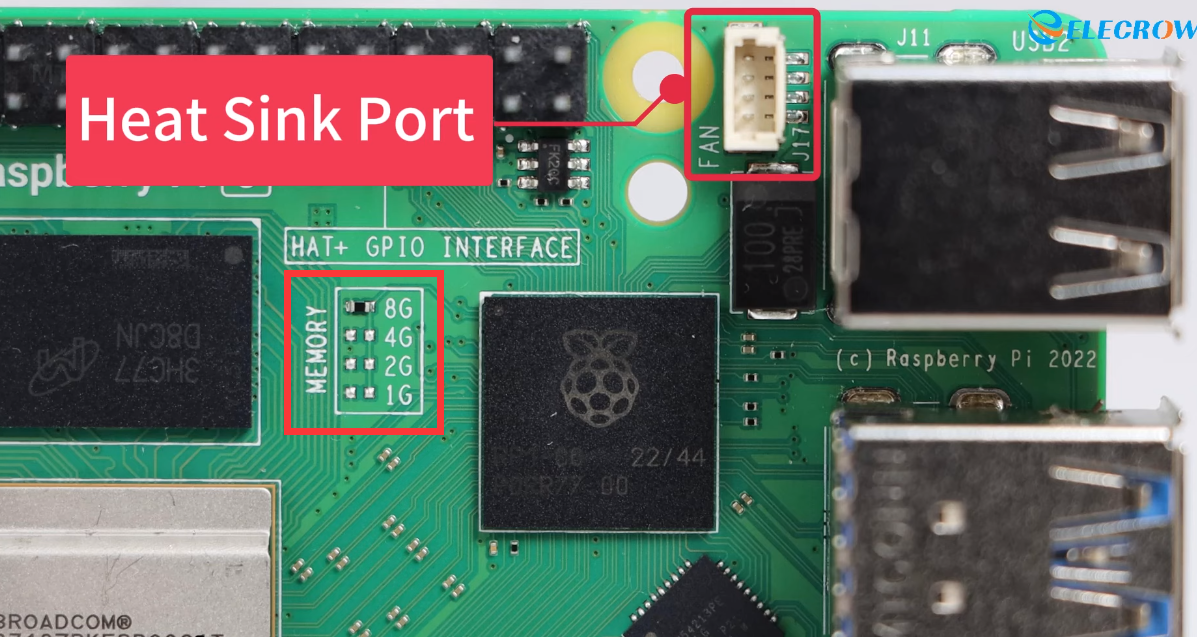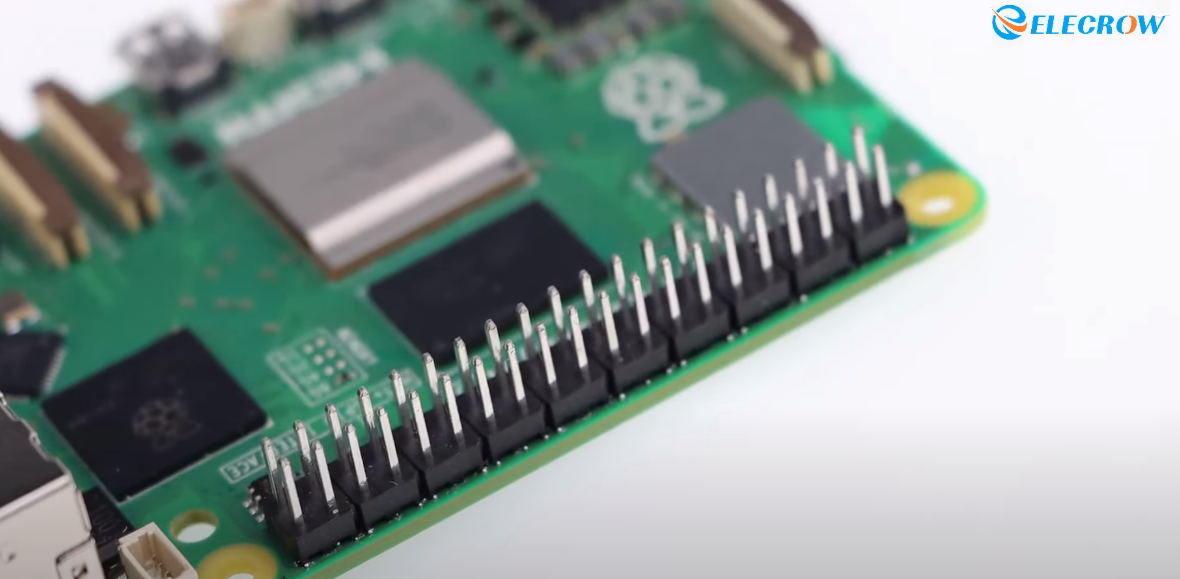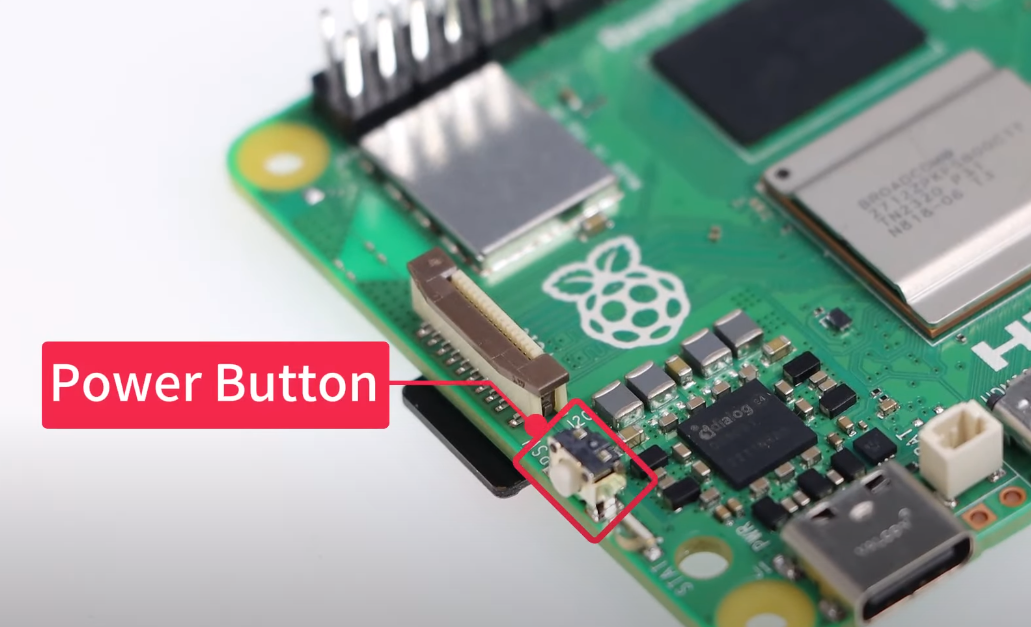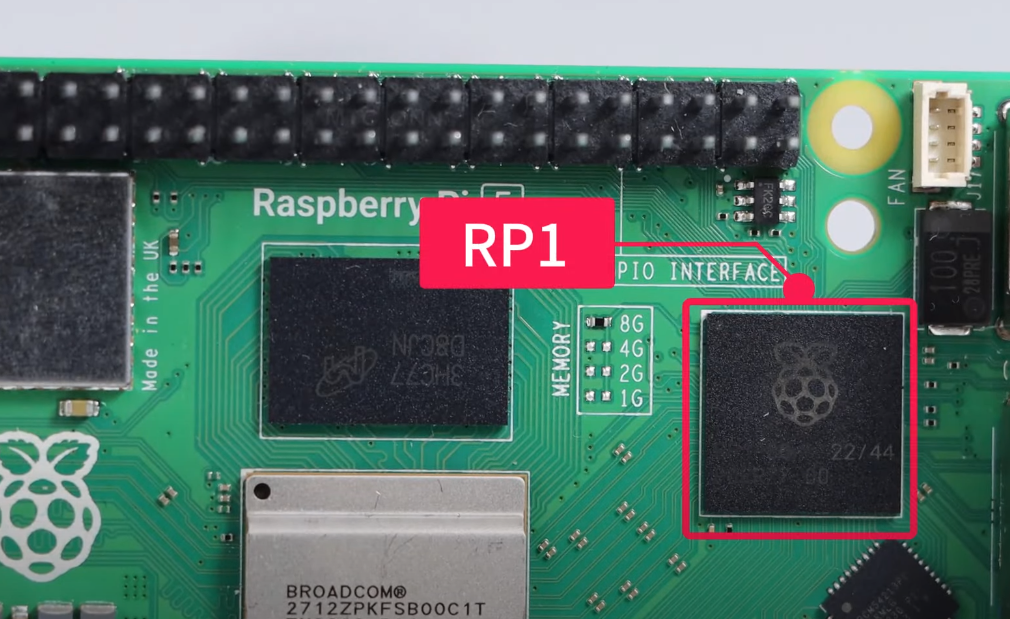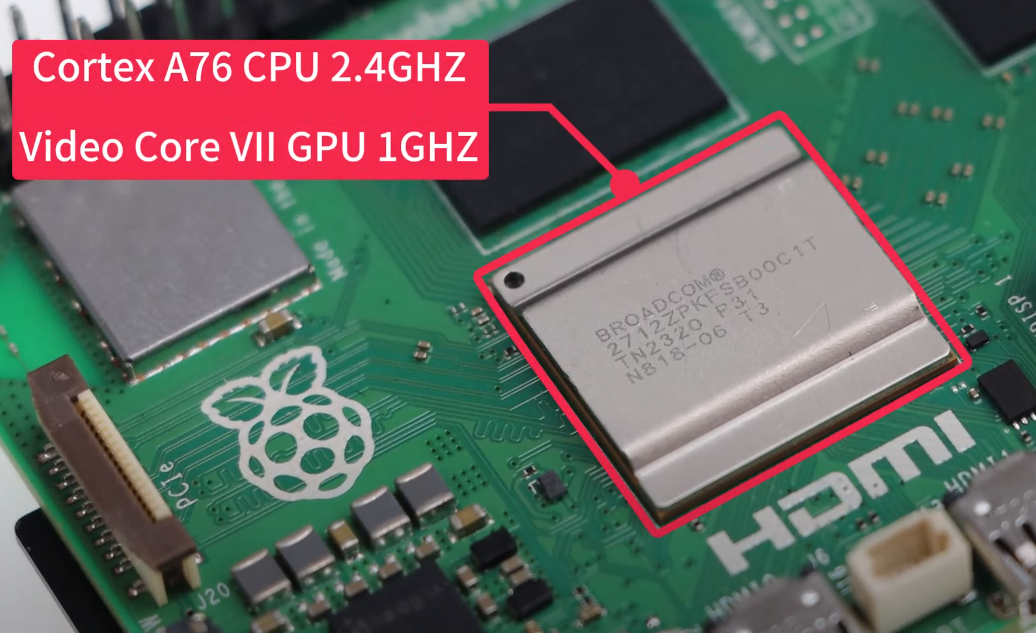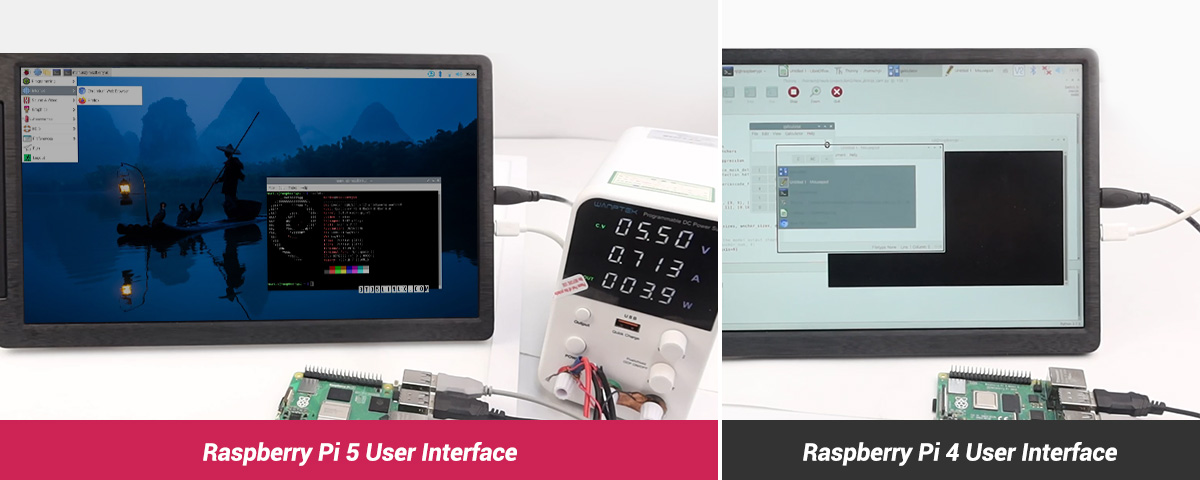The Most Comprehensive Raspberry Pi 5 Hardware & Performance review
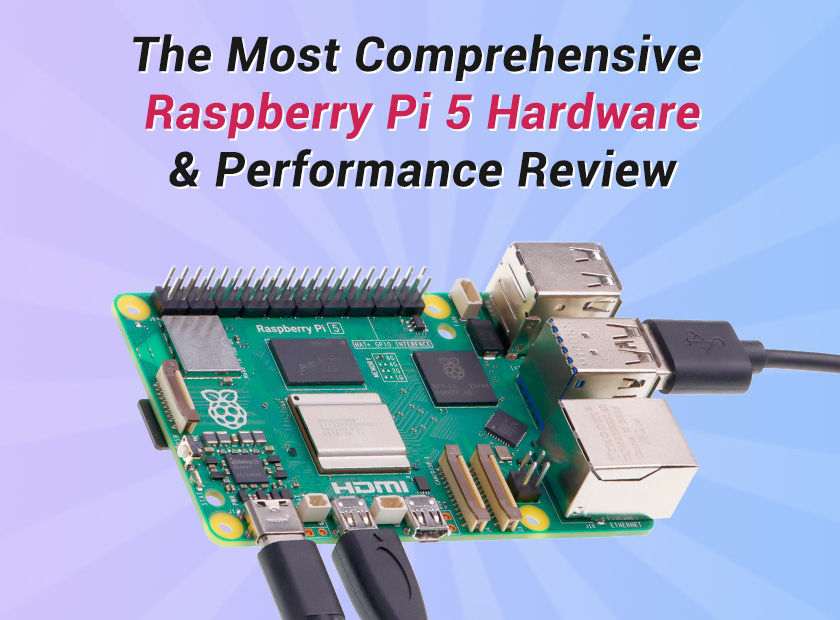
Prologue
Following in the footsteps of the wildly popular Raspberry Pi 4, the Raspberry Pi 5 arrives with a compelling promise to push the boundaries of single-board computing. With powerful processing capabilities, enhanced connectivity options, and a host of new features, this miniature marvel is poised to revolutionize the landscape of DIY projects, education, and IoT applications.
Also, as the latest upgraded version of the whole Raspberry Pi family, the Raspberry Pi 5 has achieved a lot in hardware, and related performance improvements, to make you guys know more about it in detail, we conducted a blog including a video review on how the raspberry pi 5 works in hardware terms as well as testing its benchmark, etc..
Join us as we embark on the most comprehensive Raspberry Pi 5 hardware review, where innovation and imagination know no bounds. Let's immerse ourselves in the world of the Raspberry Pi 5 and forge a path into the future of technology.
The General Raspberry Pi 5 Appearance Review
The Raspberry Pi 5 has undergone significant layout changes while maintaining a similar appearance to its predecessors. In particular, the Ethernet and USB ports have returned to the same position as on the Raspberry Pi 3.
The display interface has been moved to the lower left corner, and the display and camera interfaces have been upgraded to 2 four-channel MIPI interfaces.
However, the audio output interface from the previous model has been removed to make room for the exciting new addition of a PCle port.
This means the Raspberry Pi 5 can connect to more high-bandwidth peripherals and handle more complex tasks that require higher data transfer rates. Another new feature is the built-in RTC (real-time clock), which requires only a battery connection for accurate timekeeping even without an internet connection.
On the right side of the board, Raspberry Pi 5 features a new UART interface that greatly improves debugging efficiency.
It also has a dedicated connector for attaching a heat sink, which is a considerate and thoughtful addition. The memory capacity of the board can now be visually determined from the silkscreen, although the official announcement only mentions 8GB and 4GB versions. Judging by the silkscreen, 2GB and 1GB versions may also be available.
The GPIO ports remain unchanged, so previous peripherals can still be used without any problems.
Another welcome addition is the power button, which provides reliable on/off control.
In addition, the Raspberry Pi logo on the board represents a new chip manufactured by the Raspberry Pi company. This chip handles all of the I/O functions of the Pi 5 and appears to have made significant improvements in peripheral performance and functionality.
Raspberry Pi 5 CPU & GPU Review
Finally, let's look at the processor used in the Raspberry Pi 5. It features a Cortex A76 CPU running at 2.4GHz and a brand new Video Core Ⅶ GPU running at 1GHz. According to the Raspberry Pi Foundation, this will result in significant performance improvements.
Raspberry Pi 5 CPU & Hardware Performance Review
Raspberry Pi 5 Sysbench Testing
Sysbench is a versatile open-source benchmarking tool that can evaluate the performance of various parameters such as CPU, memory, I/O, and MySQL database. It is particularly useful for benchmarking MySQL parameters when running intensive database loads. This command line tool is freely available and provides an easy way to test your Linux system.
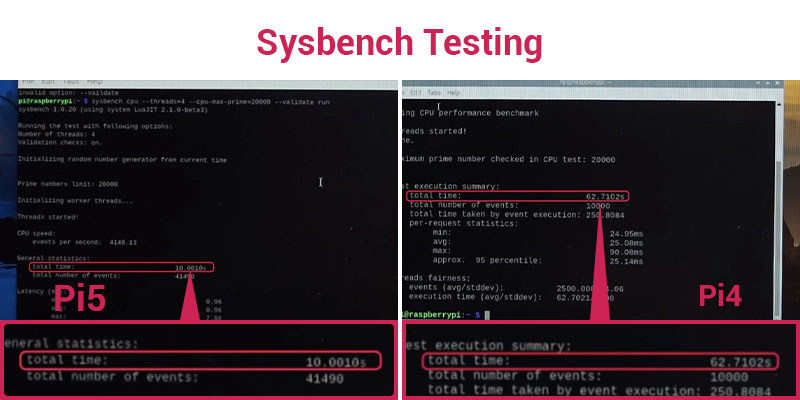
Elecrow engineers used the Sysbench tool to measure the CPU performance of the Raspberry Pi 5. The tool performs computationally intensive tasks such as prime number computation and compression/decompression. The test used 4 threads to compute prime numbers with a maximum range of 20,000. The duration of this process was examined to assess the CPU performance. The result showed that the Raspberry Pi 4 took 62 seconds to complete the calculation, while the Raspberry Pi 5 took only 10 seconds. There's no doubt that the Raspberry Pi 5 has leapfrogged the Pi 4 in terms of CPU performance.
Raspberry Pi 5 Hashcat Testing
Hashcat is a password-cracking tool that can be used for both legal and illegal purposes. It is an extremely fast, efficient, and versatile hacking tool that helps to perform brute force attacks using hash values of passwords that are guessed or applied by the tool. By using Haschcat testing, we can quickly test the Raspberry Pi 5 Processing Performance.
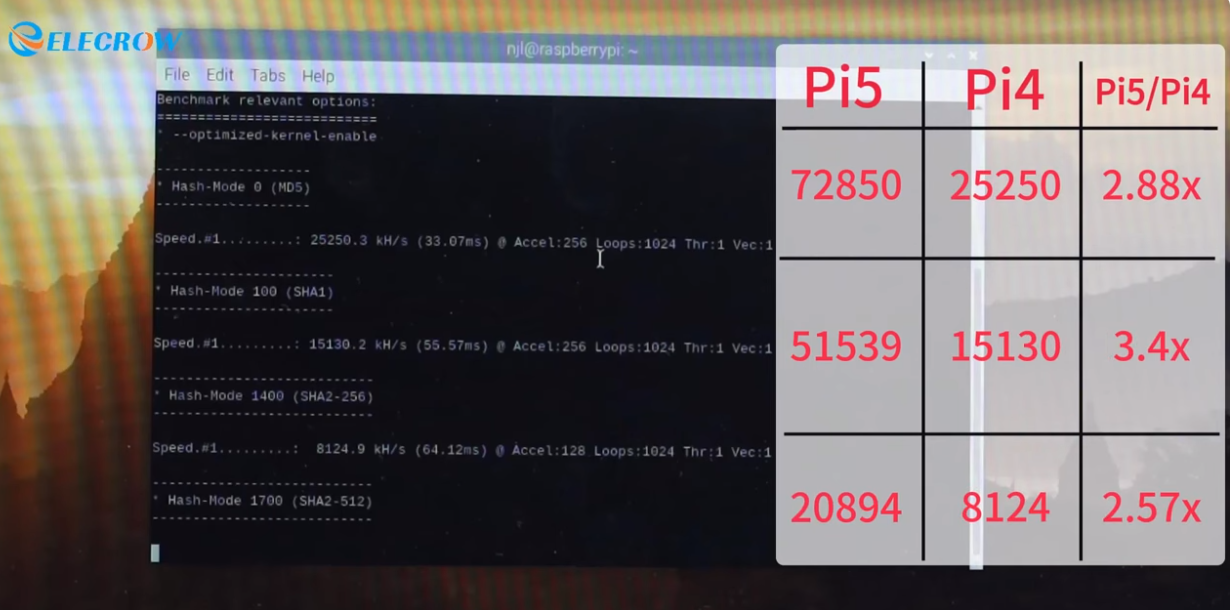
For more precise testing, we also tried using the Hashcat tool to evaluate the Raspberry Pi 5's ability to perform single-threaded computations. Let's take a closer look at the speed of common encryption algorithms. The Raspberry Pi 5 is 2.5 to 3.4 times faster than the Raspberry Pi 4, and this is only a small part of the advantage of the Raspberry Pi 5's single-threaded performance.
Raspberry Pi 5 Hard Drive Hdparm Testing
Hdparm is a command line tool that accurately tests the read speed of hard disk drives. It helps to determine if drives are performing as expected. We used the hdparm tool to measure the memory read and write speeds of both the Raspberry Pi 4 and 5. Our results showed that the Raspberry Pi 4 had a memory read/write speed of 43MB/s, while the Pi 5 achieved a speed of 85MB/s - almost double that of the Pi 4. These results make it clear that the Raspberry Pi 5 has superior performance capabilities.
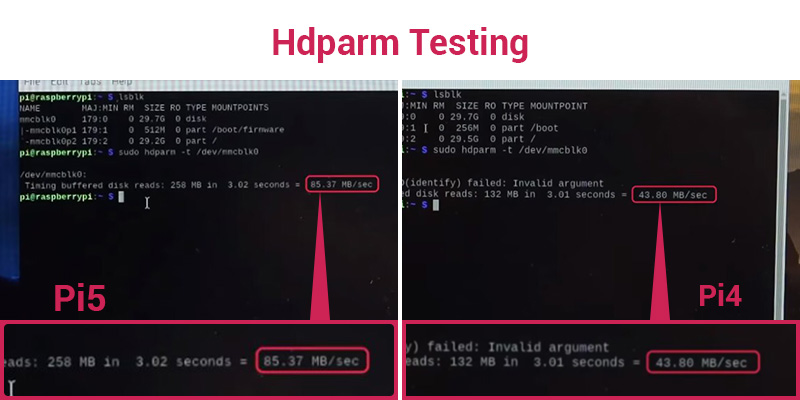
Raspberry Pi 5 Boot Time Review
Let me show you the impressive capabilities of the Raspberry Pi 5 by comparing it to the Raspberry Pi 4. We'll start by powering up both devices and seeing the significant performance improvements of the new model.
To make this test as accurate as possible, I will power up both devices at the same time and use a camera to capture the Raspberry Pi's screen from start to finish.
The results are astounding! The Raspberry Pi 5 boots in just 18 seconds, which is faster than most computers. Meanwhile, the Raspberry Pi 4 is still working hard to complete the process and it took 62 seconds to boot.
The Raspberry Pi 5 is the clear cheetah killing Raspberry Pi 4 in terms of boot time.
Raspberry Pi 5 User Experience Review
Now let's compare the usability of the Raspberry Pi 4 and 5. Those who have used the Raspberry Pi 4 desktop will agree that it is an average experience at best. For example, switching between tasks may not be as smooth as you would like. With the Raspberry Pi 5, however, you will be amazed at how smooth and seamless it is to switch between tasks.
The Raspberry Pi 5 also comes with a new Bookworm operating system based on Debian 12. The most obvious difference is in user interaction. For example, with the previous system used by Raspberry Pi 4, when I press "Alt+Tab" to switch between task windows, only a few rows of task windows are displayed. But with the Raspberry Pi 5, the same keystroke results in a smooth and clear multitasking window interface, as if I'm using my tablet. This is a significant improvement in user interaction for the new Raspberry Pi 5 OS.
Raspberry Pi 5 Video Playback Review
In the same way, we can measure its overall performance by streaming 1080p videos online. Upon observation, it's clear that the Raspberry Pi 5 excels in terms of smoothness and visual quality during video playback. This makes it an excellent choice for a portable entertainment device, perfect for watching shows and movies.
Raspberry Pi 5 Heat Generation & Power Consumption Review
We also ran a test to measure the heat generated by the devices during use. The comparison shows that both Raspberry Pi 5 and Raspberry Pi 4 generate similar amounts of heat. In terms of power consumption, the PI4 and PI5 have similar power consumption when not running programs. However, during video playback, there is only a small difference of 0.2 watts in their power consumption.
Final Words
The Raspberry Pi 5 has significantly improved CPU, GPU, and hardware performance over its predecessor, the Raspberry Pi 4. Surprisingly, its price remains very affordable, making it undoubtedly the most cost-effective choice compared to similar products.
Click here to pre-order the Raspberry Pi 5, which will be available from Elecrow soon.
In addition, as you may know, as an open-source hardware provider, Elecrow has developed the CrowPi series, which is actively being tested for compatibility with the Raspberry Pi 5 and other aspects. The CrowPi series will be the preeminent electronic product you can use with Raspberry Pi 5. Please stay tuned for the latest updates from us.


